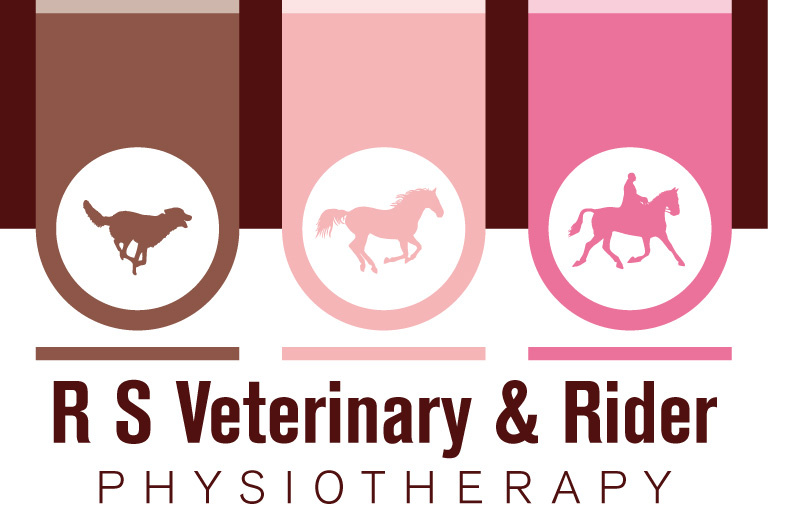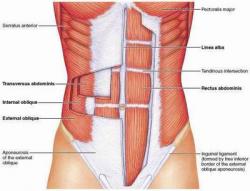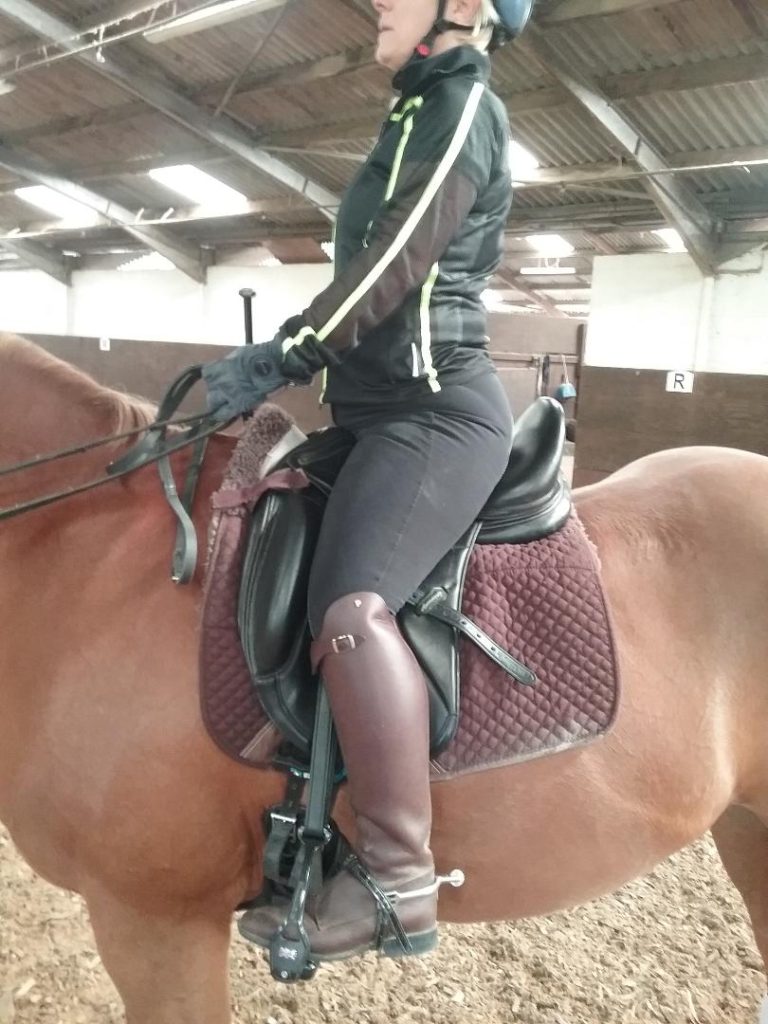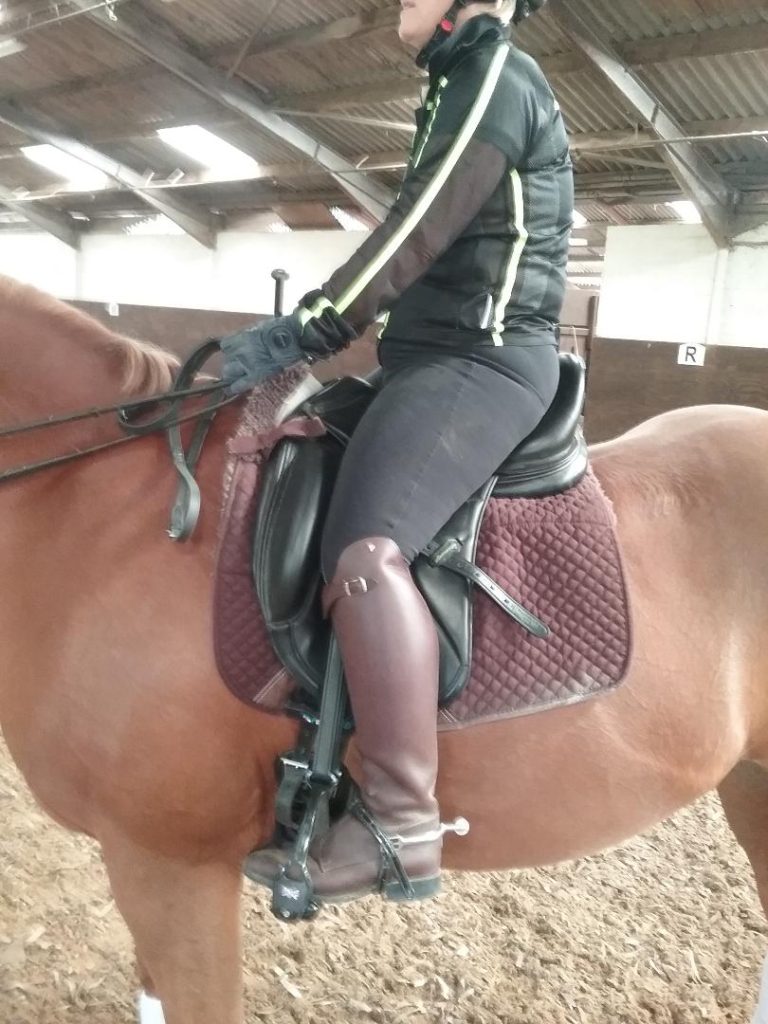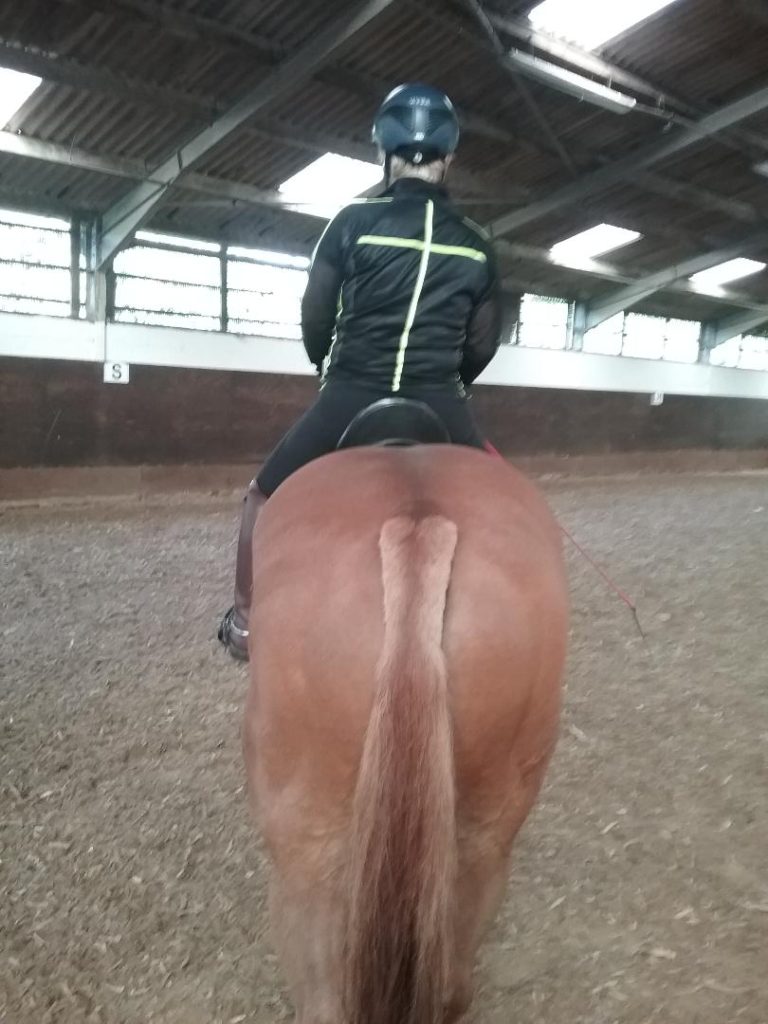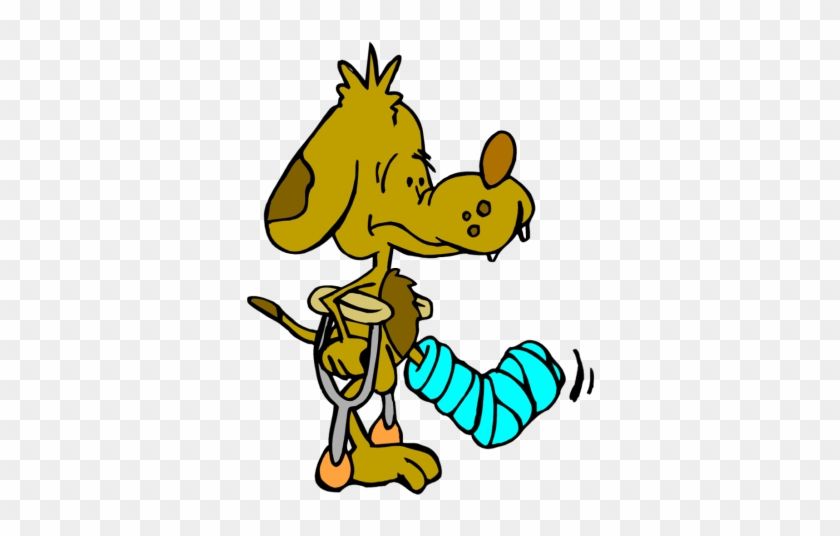Rebecca Sedgwick; MCSP, BSc (hons) Physiotherapist; PgDip Veterinary Physiotherapy
ACPAT registered Chartered Physiotherapist
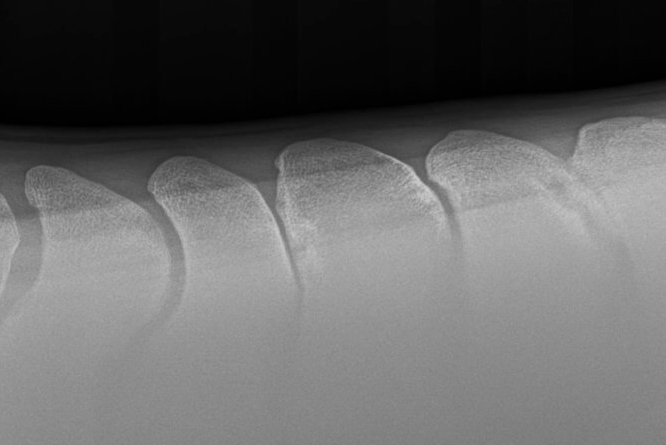
Kissing spine is estimated to affect approximately 40% of the equine population. It refers to overcrowding or impingement of 2 or more dorsal spinous processes (DSP), found in both the thoracic and lumbar regions but most commonly found in the region where the saddle sits, between T6-18.
Conformation, training and poor saddle fit are often cited as contributory factors, although research has indicated that there are significant genetic links to kissing spine and breeding from affected horses should therefore be avoided.
Symptoms commonly observed are back soreness and muscle spasm, reluctance on being saddled/ mounted, behavioural issues and reduced performance. In some cases hind limb lameness has been noted. However, back pain can be secondary to hind limb problems and as a number of horses with a presentation off kissing spine do not show clinical signs it is important that thorough investigation enables identification of the primary cause of symptoms.
Treatment may involve corticosteroid injections or surgery. The most common surgeries are ISLD (Interspinous Ligament Desmotomy) or osteotomy via resection of the affected DSP’s. Results can be variable and may be affected by factors such as chronicity of symptoms. Effective rehabilitation and management is key to optimise recovery and return to activity.
Communication between your team of professionals- Vet, Physiotherapist, Saddler, Farrier & Trainer will help to ensure the best recovery and long term management for your horse.
Early assessment from a suitably qualified Physiotherapist is important to identify problem areas and advise on an appropriate rehabilitation plan. The aim of Physiotherapy treatment will be initially to assist with pain management and help to restore correct movement patterns, strength and proprioception.
A generalised protocol may provide some guidance on progression in the Rehabilitation
Programme but it is important to remember that each horse is individual and treatment
should be based on their specific problems and compensation.
Various interventions may be commonly recommended/ incorporated into the treatment programme:
Manual therapy- spinal mobilization/ manipulation and soft tissue techniques have been shown to help reduce pain & improve movement dysfunction in humans by inducing neurophysiological change in tissue & joint structures. There has been some research in horses to support increases in spinal range of movement following treatment
Electrotherapy- eg NMES, H wave. Robust evidence for support of electrotherapy in horses is relatively limited, although studies have showed some evidence for the use of NMES and H wave in reduction of muscle spasm & increase in trunk movement.
Dynamic mobilizations (baited stretches)- research has shown improvements in epaxial
muscle activation with baited stretches & this is a useful intervention to introduce in the
early stages whilst your horse is on box rest. A study incorporating their use in conjunction with gymnastic exercises ( small circles, pelvic tilts, backing up, walking over a raised pole) has shown significant increase in postural muscle size.
Kinesiotape- some therapists incorporate the use of kinesiotape although research has
shown limited evidence of its effects with no statistical change of thoracolumbar flexion/ extension. Individual movement strategies have been noted but which indicates that it may induce a change in movement patterns but care should be taken to deduce that this is a positive effect & not encouraging unwanted adaptive movement.
Lunging aids- The use of lunging aids, eg Pessoa training aid, are often advocated during kissing spine rehabilitation. Research has shown that the use of Pessoa or similar lunging aids can influence stride length & may influence activation of the longissimus dorsi muscle in trot. However, effects on different horses can be variable & their use/ effects should be carefully evaluated.
Elastic Resistance bands- There has been some research supporting the use of elastic
resistance bands in improving core muscle activation particularly in conjunction with
walking & trotting over raised poles.
Pole work- Research has shown an increase pelvic movement in core muscle activation both on its own & in conjunction with resistance bands as above.
Water treadmill- An increase in water depth has shown to increase thoracic and sacral range of movement.
It is important that the effects of any interventions used are carefully monitored. Your
Physiotherapist will use clinical reasoning to choose interventions that address the
individual horse’s problems & dysfunction. They should constantly monitor, evaluate and adapt treatment if required to ensure the horse is progressing as anticipated. This should include assessing effects of training aids, pole work & the use of treadmills , evaluating the horse’s movement & response & regressing or progressing as indicated.
Optimising foot balance throughout the rehabilitation is vital to help avoid compensatory movement so it is important that the farrier is on board with the rehabilitation process. When commencing ridden work, saddle fit is paramount & the ability/ knowledge of the rider to work the horse correctly will have an influence of how the horse progresses in this phase. It may be beneficial for the rider to incorporate the assistance of a suitably experienced rider during the rehabilitation process if required.
In summary, treatment should be specific, measured and progressive. Liaison with the vet and other professionals, as previously mentioned, is important & response to treatment discussed between the owner & team members to incorporate a multi- disciplinary approach to optimise recovery and management.
If you would like help with your horse’s treatment/ rehabilitation following diagnosis from kissing spine or have any other queries how Physiotherapy may help your horse please contact me
Tel 07914 822013/ Email rsvetphys@gmail.com
Rebecca Sedgwick, ACPAT registered Chartered Physiotherapist; member of RAMP
R S VETERINARY & RIDER PHYSIOTHERAPY
Providing Physiotherapy services for Horse & Rider in Hampshire, South Wilts, East Dorset
